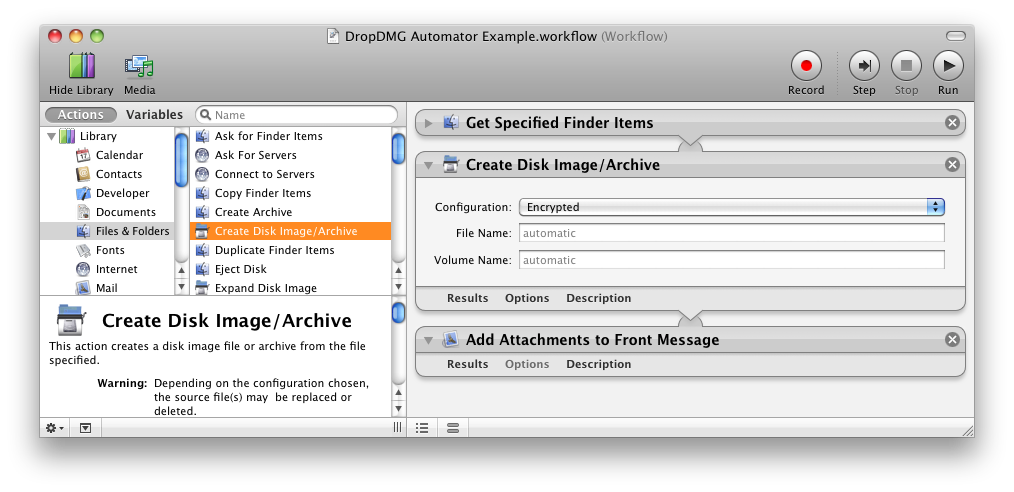Running Dmg From Command Line
Running command prompt as another user: If you have multiple commands need to be executed with administrator(or any other user )credentials, instead of running each command using runas, you can open command prompt window once as the administrator and then run all the commands in that window. Oct 18, 2016 You can write C programs using notepad and compile them using cmd. All you have to do is to download MinGW Compiler and install it. Then go to its bin directory.
Jan 27, 2014 Note: the drive must fall with the users privileges (or use sudo), and the volume must be actively mounted (here’s how to do that from the command line). Just like running Disk Utility from the GUI, the command line may take a while. If no errors are reported, repairing the volume is unnecessary. If you see a message like the following. Jan 26, 2019 Installing applications on macOS and OS X computers is easy to do when deploying the apps as packages through the Terminal using the Installer command for. How to Run Two or More Terminal Commands at Once in Linux. Lori Kaufman @howtogeek Updated September 22, 2016, 8:24pm EDT. If you use Linux, you know how useful the command line can be for working with files, installing software, and launching programs. But it can be even more efficient if you run multiple commands at once.
This topic includes the following sections:

System Requirements for Installing the JDK on macOS
Mac os dmg to usb linux. The following are the system requirements for installing the JDK on macOS:
Any Intel-based computer running macOS.
Administrator privileges.
You cannot install Java for a single user. Installing the JDK on macOS is performed on a systemwide basis for all users. Administrator privileges are required to install the JDK on macOS.
Determining the Default JDK Version on macOS
When starting a Java application through the command line, the system uses the default JDK.
You can determine which version of the JDK is the default by entering java -version in a Terminal window. If the installed version is 13 Interim 0, Update 0, and Patch 0, then you see a string that includes the text 13. For example:
At the end of each of your turns, you. In addition, once on each of your turns, you can deal extra radiant damage to one target when you deal damage to it with an attack or a spell. Dmg aasimar vs volo aasimar. 105):Radiant Consumption. Starting at 3rd level, you can use your action to unleash the divine energy within yourself, causing a searing light to radiate from you, pour out of your eyes and mouth, and threaten to char you. Take radiant damage equal to half your level (rounded up).
To run a different version of Java, either specify the full path, or use the java_home tool. For example:
$ /usr/libexec/java_home -v 13 --exec javac -version
Installing the JDK on macOS

- Download the JDK
.dmgfile,jdk-13.interim.update.patch_osx-x64_bin.dmg.Before the file can be downloaded, you must accept the license agreement.
- From either the browser Downloads window or from the file browser, double-click the
.dmgfile to start it.A Finder window appears that contains an icon of an open box and the name of the.pkgfile. - Double-click the
JDK 13.pkgicon to start the installation application.The installation application displays the Introduction window. - Click Continue.
- Click Install. A window appears that displays the message: Installer is trying to install new software. Enter your password to allow this.
- Enter the Administrator user name and password and click Install Software.The software is installed and a confirmation window is displayed.
.dmg file if you want to save disk space. Uninstalling the JDK on macOS
You must have Administrator privileges.Note:
Do not attempt to uninstall Java by removing the Java tools from /usr/bin. This directory is part of the system software and any changes will be reset by Apple the next time that you perform an update of the OS.
- Go to
/Library/Java/JavaVirtualMachines. - Remove the directory whose name matches the following format by executing the
rmcommand as a root user or by using thesudotool:/Library/Java/JavaVirtualMachines/jdk-13.interim.update.patch.jdkFor example, to uninstall 13 Interim 0 Update 0 Patch 0:
$ rm -rf jdk-13.jdk
Installation FAQ on macOS Platform
This topic provides answers for the following frequently asked questions about installing JDK on macOS computers.
1. How do I find out which version of Java is the system default?
When you run a Java application from the command line, it uses the default JDK. If you do not develop Java applications, then you do not need to worry about this. See Determining the Default JDK Version on macOS.
2. How do I uninstall Java?
See Uninstalling the JDK on macOS.
3. After installing Java for macOS 2012-006, can I continue to use Apple's Java 6 alongside the macOS JDK for Java 13?
If you want to continue to develop with Java 6 using command-line, then you can modify the startup script for your favorite command environment. For bash, use this:
$ export JAVA_HOME=`/usr/libexec/java_home -v 13`
Some applications use /usr/bin/java to call Java. After installing Java for macOS 2012-006, /usr/bin/java will find the newest JDK installed, and will use that for all of the Java-related command-line tools in /usr/bin. You may need to modify those applications to find Java 6, or contact the developer for a newer version of the application.
4. What happened to the Java Preferences app in Application Utilities?
Running Dmg From Command Line Windows 10
The Java Preferences app was part of the Apple Java installation and is not used by Oracle Java. Therefore, macOS releases from Apple that do not include Apple Java will not include Java Preferences.